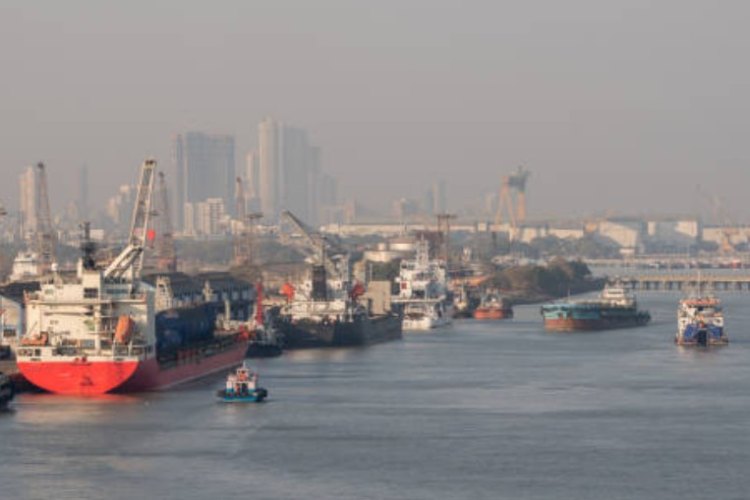Picture two distant ripples converging. In Andhra Pradesh, a shrimp farmer watches prices slide as orders stall. In Tacoma, a logistics manager recalculates costs after import bills jump. One policy gust links them: US tariffs. When duties rise, prices climb, demand shrinks, and trade detours. With Washington’s tariff doubles now in force — taking rates on Indian imports to as much as 50% — commerce is already seeking alternate channels.
The first blows land where margins are thinnest. Textile and apparel exporters report buyers delaying or trimming volumes and pressing suppliers to absorb part of the tariff hit. Firms like Gokaldas Exports, long reliant on the U.S. market, are pushing harder into the EU and UK and exploring production in African hubs to keep orders alive. This is hedging, not grand strategy. It preserves orders, payrolls, and learning curves when one route turns uneconomic.
READ | Basmati rice dispute clouds India–EU free trade talks
Seafood tells the same story with sharper edges. India’s biggest shrimp buyer has layered steep duties on top of a market already coping with weak prices at home. Trade associations warn of additional levies into 2026, while industry trackers show Indian suppliers testing new outlets as American buyers pivot to lower-tariff origins. For coastal districts that rode the aquaculture boom, tariffs translate quickly into thinner margins and idled ponds.
US tariffs: Currency tides amplify pain
The tariff shock is magnified by currency turbulence. The rupee has slid to record lows near ₹88.3 per dollar despite central bank intervention, and market chatter centres on whether 88.5 will snap before any meaningful pullback. A dearer dollar raises local currency import costs, tightens financial conditions, and blunts any price advantage from a softer rupee once energy and intermediate goods are priced in. Daily market wraps reveal how sentiment swings on tariff headlines and visa-related policy moves that weigh on Indian IT stocks and services exports.
There is also the mechanics of passthrough. As the IMF’s Gita Gopinath notes, a 10% dollar appreciation tends, on average, to add about one percentage point to inflation through dominant-currency invoicing. Other IMF work and ECB research reinforce the point: because so much of world trade is invoiced in dollars (and euros), a stronger vehicle currency pushes import prices up across many markets, regardless of bilateral exchange rates. For emerging economies, the macro hit from a stronger dollar lasts longer and bites deeper.
Diversify markets: Europe, Gulf, Africa
The policy and currency signals point to the same strategic response: diversify. Exporters are probing Europe, the Gulf and Africa even as they keep the US door ajar. Apparel producers are rerouting value chains — shipping yarn or fabric to stitch-and-finish hubs before selling into tariff-sensitive destinations — while seafood firms sample new buyers to replace cancelled lots. The policy environment helps. Brussels, for its own reasons, is hustling to seal a trade agreement with India as it looks to reduce over-dependence on the US. Meanwhile, New Delhi is speeding “early harvest” deals across Eurasia and West Asia to widen options for its exporters.
The parallel move is in money. India has steadily expanded pipes for local-currency settlement to reduce single-currency exposure when the dollar is expensive. The rupee-dirham framework with the UAE and special rupee vostro accounts let counterparties settle without cycling every invoice through dollars. Recent RBI steps have eased the opening of such vostro accounts and even allowed surplus balances to be parked in government securities—small, technical changes that matter when spreads widen or bank risk appetite tightens. No one credible predicts the dollar’s eclipse in trade; the point is resilience when a storm hits one currency.
Coalitions and the fixed-cost problem
Coalition-building is the third leg. BRICS-plus conversationssound lofty on de-risking from dominant currencies, but what exporters notice are the workmanlike bits: payment connectivity, mutual recognition of testing and standards, and corridors that shave days off shipping clocks. Summits this year focused less on a fanciful common currency and more on doubling local-currency settlements—unsexy plumbing that lowers fixed costs and opens faraway markets to smaller firms. Optionality, not rupture, is the operating idea.
Across America’s trade-dependent states, the arithmetic is blunt. Importers pay more for Indian inputs—from cotton sheets to machine parts—feeding cost pressure into downstream production. Exporters worry that once a foreign buyer pivots to an alternative supplier, market share is stubborn to reclaim. Ports adapt quickly; trade patterns adapt faster. The hardest thing to recover is habit. Industry reporting on textiles captures the dynamic: cancelled orders today, hurried supplier switches tomorrow, and years of slow repair after that.
Policy clarity beats complaint
For India, the priority is to keep channels warm for a negotiated climb-down while behaving as if relief may be late. That means upgrading logistics and quality infrastructure to make it cheaper to reach Europe, the Gulf and Africa; helping mid-sized firms plug into new routes; and expanding currency-settlement networks wherever partners are willing.
The stronger dollar raises the cost of waiting and rewards firms that secure liquidity lines now. Export data offer some encouragement—electronics, gems and pharma have cushioned the blow in recent months—but broad resilience will depend on how fast supply chains are rewired beyond one tariff cycle.
Tariffs can be dialled back; the rupee can stabilise as policy anchors return; confidence can be rebuilt through focused sectoral deals that protect jobs on both shores. Yet even if politics remains noisy, the operational playbook is clear: diversify markets; diversify money; and chip away at the fixed costs that keep smaller firms out. In a world where policy shocks and currency tides travel faster than ships, resilience is not a slogan. It is the line between detour and dead end.
Soumyatanu Mukherjee is Associate Professor of Economics, XLRI Xavier School of Management, Delhi-NCR.

